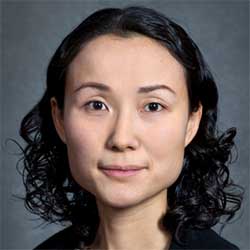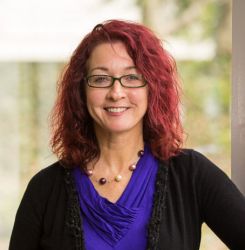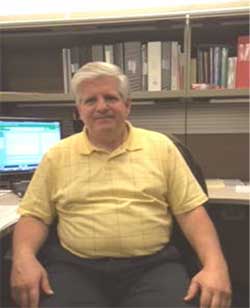FRTR Spring 2020 Meeting, Session 2: Bioremediation Advances - New Strategies, Optimization, and Performance Monitoring
Sponsored by: Federal Remediation Technologies Roundtable (FRTR)
Archived: Friday, June 5, 2020
The Spring 2020 meeting of the Federal Remediation Technologies Roundtable (FRTR) will be held as a two-part webinar on Friday, May 29 and Friday, June 5, 2020. As always, FRTR meetings are open to the public.
FRTR's objectives for this meeting are to:
- Review the state of the practice of bioremediation: Broad overview of where it is commonly applied, where it is still experimental, and what are the challenges.
- Discuss advances in bioremediation for organic and inorganic contaminants, including new approaches, optimization, and tools for monitoring technologies to determine successful performance.
- Review brief case studies to demonstrate how new technologies are being applied and optimized.
Session 2: Current Research and Inorganic Contaminants
New Technology Briefings
- Superfund Research Program (SRP);
- Strategic Environmental Research and Development Program (SERDP); and
- Environmental Security Technology Certification Program (ESTCP)
Bioreactor and Vertical Wetland Remediation of Metal Contaminated Mine Influenced Water (MIW)
Abstract: There are over half a million abandoned mine sites in the U.S. potentially emanating mining-influenced water, contaminating streams and soils in adjacent areas. These sites present major challenges for remediation, including seasonal inaccessibility, rough terrain, lack of energy sources, high acidity, and metal concentrations (e.g. Fe, Al, Cu, Pb, Zn, Mn, Cd, etc.). To appropriately evaluate mining-impacted water treatment techniques that can provide the best cost benefit with the desired effluent quality, decision-makers usually rely on bench-scale and pilot-scale tests before designing field-scale reactors. Traditionally, the focus has been on metal removal efficiency to determine the feasibility of the proposed treatment, but it is difficult to replicate the high efficiencies of bench-scale tests with field-scale reactors. The integration of aqueous phase analytical chemistry (e.g. pH, alkalinity, metal composition, anions, sulfides, etc.) with solids analysis (e.g. elementary composition, speciation by XPS and XANES, etc.) and microbial transformation of soluble metals provides the tools to evaluate metal removal while elucidating the involved mechanisms. The benefit of this approach is that the impact of several variables (e.g. substrate volume, mass and composition, hydraulic retention time, dissolved oxygen content in the influent, etc.) can be evaluated for metal and sulfate removal. Case studies of passive biochemical reactors using actual mine water from abandoned mine sites will be used to demonstrate the benefits of this approach.
Advances in Long-term Monitoring Technologies for Supporting Bioremediation
Abstract: Bioremediation for heavy metals aims to immobilize them in subsurface and to reduce aqueous concentrations for an extended time. It has been investigated for many years at the Department of Energy (DOE)'s legacy sites; particularly for uranium. A variety of bioremediation technologies and associated monitoring/modeling methodology have been evaluated. Recently, hydroxyapatite-based novel permeable reactive barriers have been developed, which has shown a very promising result at the DOE's Rifle site (Colorado), showing more than two years of immobilization without rebound. During this process, groundwater monitoring has been found to be critical for understanding groundwater system dynamics, and its effect of bioremediation outcomes. We are currently developing a new paradigm of long-term monitoring approach to support bioremediation, by taking advantage of recent advances in in situ sensors and machine learning.
Upcoming FRTR Presents Series Webinars
FRTR Presents Series Archives
- FRTR Presents...Recent Advances in PFAS Characterization Technologies (Feb 28, 2024)
- FRTR Fall 2023 General Meeting: Recent Advances in PFAS Characterization Technologies (Nov 7, 2023)
- FRTR Spring 2023 General Meeting: Best Practices and Recent Technical Advances in Site Characterization and Conceptual Site Model Development (May 16, 2023)
- Application of Robotics, Machine Learning and Artificial Intelligence Technologies to Site Remediation (Jun 13, 2022)
- Application of Robotics, Machine Learning and Artificial Intelligence Technologies to Site Remediation (Jun 6, 2022)
- FRTR Fall 2021 Meeting, Two Part Series on Remedy Protectiveness and Climate Resilience in Site Cleanups: Session 2 (Nov 15, 2021)
- FRTR Fall 2021 Meeting, Two Part Series on Remedy Protectiveness and Climate Resilience in Site Cleanups: Session 1 (Nov 8, 2021)
- FRTR at 30 Years: Grand Challenges and Opportunities for Advancing Remediation Technologies, Session 2 (May 26, 2021)
- FRTR at 30 Years: Grand Challenges and Opportunities for Advancing Remediation Technologies, Session 1 (May 19, 2021)
- FRTR at 30 Years: A Retrospective of Applied Innovative Technologies for Successful Site Remediation (Nov 18, 2020)
- FRTR Spring 2020 Meeting, Session 2: Bioremediation Advances - New Strategies, Optimization, and Performance Monitoring (Jun 5, 2020)
- FRTR Spring 2020 Meeting, Session 1: Bioremediation Advances - New Strategies, Optimization, and Performance Monitoring (May 29, 2020)
- FRTR Presents...Synthesizing Evolving Conceptual Site Models (CSMs) with Applicable Remediation Technologies (Apr 1, 2020)
- FRTR Presents...Modeling in Support of Site Remediation, Session 2 (Dec 4, 2019)
- FRTR Presents...Modeling in Support of Site Remediation, Session 1 (Nov 26, 2019)
- FRTR Presents...Per- and Polyfluoroalkyl Substances (PFAS) Emerging Characterization and Remedial Technologies, Session 2 (Sep 26, 2019)
- FRTR Presents...Per- and Polyfluoroalkyl Substances (PFAS) Emerging Characterization and Remedial Technologies, Session 1 (Jun 20, 2019)
- FRTR Presents...Evolution of Subsurface Remediation: Lessons Learned from Technical Challenges to Achieving Cleanup Goals - Part 2 (Oct 17, 2018)
- FRTR Presents...Evolution of Subsurface Remediation: Lessons Learned from Technical Challenges to Achieving Cleanup Goals - Part 1 (Sep 27, 2018)
- FRTR Presents...Remediation Technologies for Radionuclides and Heavy Metals in Soil, Ground Water and Sediments, Session 2 (Mar 28, 2018)
- FRTR Presents...Remediation Technologies for Radionuclides and Heavy Metals in Soil, Ground Water and Sediments, Session 1 (Feb 28, 2018)
- FRTR Presents...Heavy Metals-Mining Site Characterization and Treatment Session 3 (Aug 10, 2017)
- FRTR Presents...Heavy Metals-Mining Site Characterization and Treatment Session 2 (Jul 26, 2017)
- FRTR Presents...Heavy Metals-Mining Site Characterization and Treatment Session 1 (Jul 10, 2017)
- An Introduction to Green and Sustainable Remediation: What, Who, Why, and How (Jun 10, 2015)
- FRTR Presents: Large-Dilute Plumes: Challenges and Opportunities (May 1, 2013)
Accessibility, Recording, and Content Disclaimer
Rehabilitation Act Notice for Reasonable Accommodation
It is EPA's policy to make reasonable accommodation to persons with disabilities wishing to participate in the agency's programs and activities, pursuant to the Rehabilitation Act of 1973, 29 U.S.C. 791. Any request for accommodation should be made to Cindy Frickle at 703-603-8763 or frickle.cynthia@epa.gov, preferably one week or more in advance of the webinar, so that EPA will have sufficient time to process the request. EPA would welcome specific recommendations from requestors specifying the nature or type of accommodation needed. Please note that CLU-IN provides both alternate phone call-in options and closed captioning for all webinars, and requests for these specific accommodations are not necessary.
Webinar Recording
By participating in this CLU-IN webinar, you automatically agree to authorize recording of audio and visual content presented during this live event and consent to subsequent use of this recording in the public domain by the U.S. Environmental Protection Agency. This recording may include questions, comments and poll responses provided by you during the live event in addition to your name, voice, image or likeness. This recording will be made available after the conclusion of the live event as part of the CLU-IN webinar archives, and will remain available indefinitely. If you do not wish to consent to the recording, please do not join the live event, and contact Jean Balent at 202-566-0832 or balent.jean@epa.gov to discuss your concerns.
Content Disclaimer
This webinar is intended solely to provide information to the public. The views and opinions expressed as part of this webinar do not necessarily state or reflect those of the U.S. Environmental Protection Agency. It is not intended, nor can it be relied upon, to create any rights enforceable by any party in litigation with the United States, or to endorse the use of products or services provided by specific vendors. With respect to this webinar, neither the United States Government nor any of their employees, makes any warranty, express or implied, including the warranties of merchantability and fitness for a particular purpose, or assumes any legal liability or responsibility for the accuracy, completeness, or usefulness of any information, apparatus, product, or process disclosed, or represents that its use would not infringe privately owned rights.
Presenters:
 Heather F. Henry, Ph.D., Program Administrator, NIEHS Superfund Research Program (heather.henry@nih.gov)
Heather F. Henry, Ph.D., Program Administrator, NIEHS Superfund Research Program (heather.henry@nih.gov)
Heather Henry, Ph.D., is a health science administrator for the NIEHS where she oversees Superfund Research Program (SRP) grants that spans human health toxicology, risk assessment, detection technologies and remediation approaches. She provides guidance to potential applicants for SRP’s Multiproject Center Grants (P42s), Individual Research Grants (R01s), Small
Business / Technology Transfer Grants (R41-44; SBIR/STTR), and Conference Grants (R13). Heather studied plant-based environmental remediation
(phytoremediation) and ecological restoration as part of her doctoral work at the University of Cincinnati and as a Fulbright Postdoctoral Fellow at the University of Melbourne and University of Adelaide in Australia. She has been with NIEHS since 2006.
 Souhail Al-Abed, EPA Office of Research and Development (al-abed.souhail@epa.gov or 513-569-7849)
Souhail Al-Abed, EPA Office of Research and Development (al-abed.souhail@epa.gov or 513-569-7849)
Dr. Souhail Al-Abed is a research chemist at the Environmental Protection Agency (EPA) Office of Research and Development/Center for Environmental Solutions and Emergency Response. His research encompasses significant impact on advancing his fields of endeavor in remediation, materials management, and nanotechnology, particularly his work on development and application of novel methods to treat contaminated soil, sediments, and water. He evaluated novel and traditional water treatment options based on sorption, precipitation, bioremediation in bench-scale, pilot and field scale tests. He developed successful methodology to test metal removal with sulfate-reducing bioreactors using real field conditions. The experimental and theoretical work was approached using the principles of sustainability as a core: protection of human health and the environment, and resource utilization optimization to allow the next generations to have the best opportunity with their life quality. Dr. Al-Abed authored and coauthored more than 100 peer-reviewed journal articles and six book chapters. He is a Fellow of the American Chemical Society (ACS) and the Chair of the Environmental Chemistry Division at the ACS. He is also a member of American Geophysical Union (AGU) Hydrology section.
 Haruko Murakami Wainwright, Ph.D., Lawrence Berkeley National Laboratory (hmwainwright@lbl.gov)
Haruko Murakami Wainwright, Ph.D., Lawrence Berkeley National Laboratory (hmwainwright@lbl.gov)
Dr. Haruko Wainwright is a research scientist at Lawrence Berkeley National Laboratory. She earned a Master in nuclear engineering and statistics, and PhD in nuclear engineering at the University of California, Berkeley. Her research focuses on hydrological modeling, spatial statistics, data integration, and uncertainty quantification. She has worked on various research topics in both nuclear engineering and environmental sciences, including nuclear waste, groundwater contamination, Fukushima radiation monitoring, and climate change impacts on ecosystems.
 Andrea Leeson, Ph.D., Deputy Director & Environmental Restoration Program Manager
Strategic Environmental Research and Development Program (SERDP) and
Environmental Security Technology Certification Program (ESTCP) (Andrea.Leeson.civ@mail.mil or (571) 372-6398)
Andrea Leeson, Ph.D., Deputy Director & Environmental Restoration Program Manager
Strategic Environmental Research and Development Program (SERDP) and
Environmental Security Technology Certification Program (ESTCP) (Andrea.Leeson.civ@mail.mil or (571) 372-6398)
Andrea Leeson has been the Deputy Director of SERDP and ESTCP since 2014 and the Program Manager for Environmental Restoration since 2001. Prior to that, she was a Research Leader at Battelle Memorial Institute where she conducted scientific research on in situ bioremediation and the design and implementation of innovative biological, chemical and physical treatment technologies for site remediation and industrial wastewater. She received her doctoral degree in Environmental Engineering from The John Hopkins University.
Moderators:
 Jean Balent, U.S. EPA Technology Innovation and Field Services Division (balent.jean@epa.gov or 202-566-0832)
Jean Balent, U.S. EPA Technology Innovation and Field Services Division (balent.jean@epa.gov or 202-566-0832)
Ms Balent is on the staff of the EPA's Technology Innovation and Field Services Division where she has worked to collect and disseminate hazardous waste remediation and characterization information since 2003. Ms Balent manages the Clean Up Information Network website and actively supports online communication and collaboration resources available to EPA. She formerly worked with the US Army Corps of Engineers Environmental Engineering Division in the Buffalo District. Ms Balent was also a member of the SUNY-Buffalo Groundwater Research Group where she constructed and tested large scale models of groundwater flow. Ms Balent has also conducted research relating to the Great Lakes, environmental remediation, and brownfields re-development. She holds a Bachelor's degree in environmental engineering from SUNY-Buffalo and a Master's degree in Information Technology from AIU.
 Mark Rothas, U.S. Army Corps of Engineers (Mark.S.Rothas@usace.army.mil)
Mark Rothas, U.S. Army Corps of Engineers (Mark.S.Rothas@usace.army.mil)
Mark Rothas has over 35 years of environmental remediation and regulatory compliance experience working in manufacturing, corporate, consulting, and USACE positions. He has performed all facets of remediation system design, construction oversight, operation and maintenance, and project management. For USACE, Mr. Rothas has worked as a remediation technology subject matter expert as a member of its Environmental Center of Expertise, and coordinates its internal programs involving technology sharing and FUDS project remediation optimization reviews. He is also an instructor for USACE training classes involving remediation technologies and management of complex groundwater remediation projects, and has participated on ITRC complex sites management and PFAS work teams. Mr. Rothas has a B.S. in Chemical Engineering from the University of Illinois and an MBA from Roosevelt University.
 Cindy Frickle, U.S. EPA Office of Superfund Remediation and Technology Innovation (frickle.cynthia@epa.gov or 202-566-0927)
Cindy Frickle, U.S. EPA Office of Superfund Remediation and Technology Innovation (frickle.cynthia@epa.gov or 202-566-0927)
Cindy Frickle is a physical scientist with EPA's Superfund program where she reviews and propagates technical information to site cleanup professionals through Clu-In, EPA forums, and interagency channels. Prior to joining EPA, she spent time characterizing contaminated sites, coring sediments, studying microbes, and teaching. She completed her Biogeology MS and Geology BS in the University of Minnesota's School of Earth Sciences.
Webinar Slides and References:
-
 Slide Presentation for Heather Henry, Ph.D.,; Superfund Research Program; NIEHS (5.77MB/PDF)
Slide Presentation for Heather Henry, Ph.D.,; Superfund Research Program; NIEHS (5.77MB/PDF)
-
 Slide Presentation for Souhail Al-Abed; ORD, U.S. EPA (2.48MB/PDF)
Slide Presentation for Souhail Al-Abed; ORD, U.S. EPA (2.48MB/PDF)
-
 Slide Presentation for Haruko Wainwright, Ph.D., Lawrence Berkeley National Laboratory (6.68MB/PDF)
Slide Presentation for Haruko Wainwright, Ph.D., Lawrence Berkeley National Laboratory (6.68MB/PDF)
-
 Slide Presentation for Andrea Leeson, Ph.D.; Deputy Director; SERDP and ESTCP (709KB/PDF)
Slide Presentation for Andrea Leeson, Ph.D.; Deputy Director; SERDP and ESTCP (709KB/PDF)
Webinar Slides and References:
-
 Slide Presentation for Heather Henry, Ph.D.,; Superfund Research Program; NIEHS (5.77MB/PDF)
Slide Presentation for Heather Henry, Ph.D.,; Superfund Research Program; NIEHS (5.77MB/PDF)
-
 Slide Presentation for Souhail Al-Abed; ORD, U.S. EPA (2.48MB/PDF)
Slide Presentation for Souhail Al-Abed; ORD, U.S. EPA (2.48MB/PDF)
-
 Slide Presentation for Haruko Wainwright, Ph.D., Lawrence Berkeley National Laboratory (6.68MB/PDF)
Slide Presentation for Haruko Wainwright, Ph.D., Lawrence Berkeley National Laboratory (6.68MB/PDF)
-
 Slide Presentation for Andrea Leeson, Ph.D.; Deputy Director; SERDP and ESTCP (709KB/PDF)
Slide Presentation for Andrea Leeson, Ph.D.; Deputy Director; SERDP and ESTCP (709KB/PDF)
Additional Resources:
If you have a suggested topic or idea for a future CLU-IN internet seminar, please contact:
Technology Integration and Information Branch
PH: 202-566-0832 | Email: balent.jean@epa.gov
Technology Integration and Information Branch
PH: 202-566-0875 | Email: adam.michael@epa.gov





